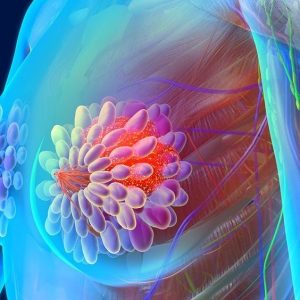As we approach Pink October, a month dedicated to breast cancer awareness, it’s crucial to emphasize the importance of early detection and appropriate treatment. Spreading knowledge can help save lives by encouraging people to seek timely medical care and explore all available treatment options for breast cancer.
What Is Breast Cancer Recurrence?
Breast cancer recurrence happens when cancer returns after initial treatment. Recurrence can happen months or even years after remission. It can occur in the same area (local recurrence), nearby lymph nodes (regional recurrence), or in distant parts of the body (distant recurrence or metastasis). The likelihood of recurrence varies depending on several factors, such as cancer type, initial treatment, and tumor size.
Factors That Affect Recurrence
Certain factors increase the risk of recurrence:
Cancer Subtype: Some types of breast cancer are more aggressive. For example, triplenegative and HER2positive breast cancers are associated with a higher risk of recurrence. On the other hand, hormone receptor positive breast cancers, such as ERpositive or PRpositive, may recur later but typically grow slower.
Tumor Size and Lymph Node Involvement: Larger tumors or those that have spread to the lymph nodes are more likely to recur.
Incomplete or Delayed Treatment: If surgery, chemotherapy, or radiation is not thorough or prompt, there’s a higher risk that some cancer cells may remain, leading to recurrence.
Types of Breast Cancer Recurrence
- Local Recurrence: When the cancer returns to the original site, such as the breast (after lumpectomy) or chest wall (after mastectomy). Early detection of local recurrence offers the best chance for successful treatment.
- Regional Recurrence: Cancer reappears in nearby lymph nodes or tissues close to the original site, such as under the arm or collarbone.
- Distant Recurrence (Metastasis): This occurs when cancer spreads to other parts of the body, most commonly the bones, lungs, liver, or brain. This form is harder to treat but can often be managed with longterm therapies.
Symptoms of Breast Cancer Recurrence
While some recurrences are detected during followup scans or checkups, it’s important to watch for symptoms, such as:
- A new lump or mass in the breast, chest wall, or underarm.
- Unexplained pain, particularly in the back, bones, or chest.
- Persistent cough or difficulty breathing.
- Changes in skin texture or the appearance of new swelling or redness.
Treatment Options for Recurrence
The treatment for recurrent breast cancer depends on where it returns and how aggressive it is. Options often include:
- Surgery: Removal of recurrent tumors, especially in local or regional recurrences.
- Chemotherapy: Targeting cancer cells that may have spread.
- Hormone Therapy: For hormone receptorpositive cancers, medications like Tamoxifen or Aromatase Inhibitors can help reduce the risk of recurrence.
- Targeted Therapy: For HER2positive cancers, drugs like Herceptin or newer therapies can specifically target the HER2 protein, which drives the growth of certain types of cancer cells.
- Immunotherapy: A promising option for specific types of recurrent breast cancer, helping the body’s immune system fight the disease.
How to Reduce the Risk of Recurrence
While not all recurrences are preventable, certain steps can help lower the risk:
Adherence to Treatment: Following prescribed treatments, such as hormone therapy or targeted therapy, for the full duration (sometimes up to 10 years) can reduce recurrence rates.
Healthy Lifestyle Choices: Maintaining a healthy diet, engaging in regular physical activity, and avoiding smoking and excessive alcohol consumption may contribute to lowering the risk.
Ongoing Surveillance: Regular followups with your healthcare provider, including mammograms, ultrasounds, and blood tests, help detect recurrence at the earliest possible stage when treatment is most effective.
Living with the Risk of Recurrence
The possibility of breast cancer recurrence can be overwhelming, but with advancements in medical treatment, many women continue to lead long, fulfilling lives after their initial diagnosis. If cancer does return, treatments are available to manage the disease, improve quality of life, and extend survival.
Emotional Support
Staying informed, seeking support from survivors, joining breast cancer communities, or consulting with a mental health professional can be beneficial for navigating the emotional challenges associated with recurrence.
Conclusion
Breast cancer recurrence is a reality for many survivors, but understanding the risk factors, types of recurrence, and available treatments helps in preparing for and managing it. With advances in medical care, early detection and proactive treatment significantly improve the chances of longterm survival and wellbeing. Whether facing a first diagnosis or managing a recurrence, comprehensive care and lifestyle management remain the cornerstone of breast cancer treatment.

